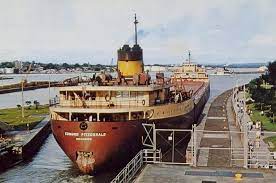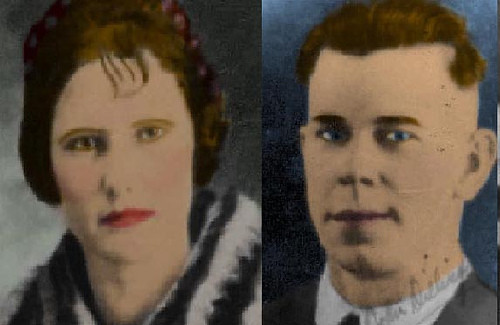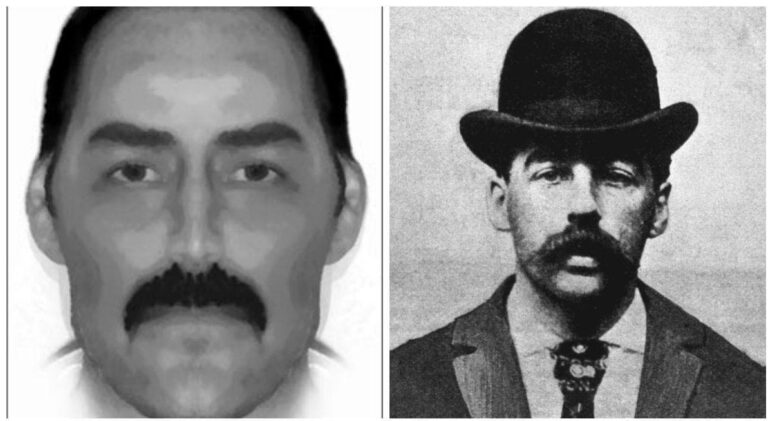The Sinking of the Edmund Fitzgerald: A Mystery That Remains Unsolved
Explore the tragic story of the Edmund Fitzgerald, the infamous shipwreck whose crew was never seen again. Discover the voyage, the crew, and the ongoing mystery.
The Crew of the Edmund Fitzgerald: Unseen and Unforgotten
The Edmund Fitzgerald remains one of the most infamous maritime tragedies in modern history. The ship sank on November 10, 1975, in Lake Superior during one of the worst storms ever recorded on the Great Lakes. What makes this tragedy even more haunting is the fact that the crew of the Edmund Fitzgerald was never seen again. This article delves deep into the fateful voyage, the crew, and the ongoing mystery surrounding their disappearance.
Ship Specifications and Historical Context

The Edmund Fitzgerald was a massive Great Lakes freighter, renowned for its size and cargo capacity. Built in 1958 by the Great Lakes Engineering Works in River Rouge, Michigan, the ship was one of the largest on the lakes, measuring 729 feet in length and weighing 13,632 tons. Its primary purpose was to transport iron ore from mines in Minnesota to steel mills in Detroit and other industrial cities.
Key Specifications:
- Length: 729 feet
- Gross Tonnage: 13,632 tons
- Cargo Capacity: 26,000 tons of iron ore
- Builder: Great Lakes Engineering Works, Michigan
The Edmund Fitzgerald was considered a marvel of engineering, capable of carrying vast quantities of cargo and navigating the treacherous waters of the Great Lakes with relative ease. Its design, however, was not immune to the harsh conditions of these waters, which would ultimately contribute to its tragic fate.
The Fateful Voyage
On November 9, 1975, the Edmund Fitzgerald departed from Superior, Wisconsin, loaded with a full cargo of iron ore. The ship was bound for Detroit, Michigan, but encountered severe weather conditions that would prove disastrous.
Departure and Initial Conditions
As the ship set out, the weather was relatively calm. However, forecasts warned of an approaching storm, which was expected to bring heavy winds and high waves. The Fitzgerald’s crew, led by Captain Ernest McSorley, had to make a crucial decision about whether to continue or seek shelter. They chose to proceed, confident in the ship’s ability to handle rough weather.
The Storm and Its Impact
The storm that hit the Edmund Fitzgerald was unprecedented. Known as the “Big Blow,” it was one of the most powerful storms to hit the Great Lakes in recorded history. Gale-force winds and waves exceeding 25 feet battered the ship, straining its hull and structure.
According to the National Weather Service, the storm produced wind gusts of up to 80 mph and waves of up to 30 feet. The Fitzgerald, already laden with iron ore, was particularly vulnerable to such conditions. As the storm intensified, the ship began to list, and its crew struggled to maintain control.
The Crew of the Edmund Fitzgerald
The crew of the Edmund Fitzgerald consisted of 29 men, each with a vital role in the operation of the ship. Despite their experience and skill, they faced an unimaginable challenge in the storm.
Key Crew Members and Their Backgrounds
| Name | Role | Background |
|---|---|---|
| Captain Ernest McSorley | Captain | A seasoned mariner with over 40 years of experience on the Great Lakes. |
| First Mate John M. Kolesar | First Mate | Responsible for navigation and ship operations. |
| Chief Engineer R. B. McClain | Chief Engineer | Managed the engine room and machinery. |
| Second Mate Peter A. MacLellan | Second Mate | Assisted with navigation and watchkeeping. |
Each crew member played a crucial role in the ship’s operation. Captain McSorley, known for his extensive experience, was highly respected in the maritime community. The crew’s combined expertise was put to the ultimate test during the storm, but despite their efforts, the ship succumbed to the harsh conditions.
Crew’s Last Moments and Final Communication
The last known communication from the Edmund Fitzgerald was a brief radio message received by the nearby vessel, the Arthur M. Anderson. Captain McSorley reported that the ship was taking on water and was experiencing severe difficulties. The message was cut off abruptly, and the ship disappeared from radar shortly after.
Witnesses reported that the Fitzgerald appeared to be in distress, with visible signs of damage. Despite attempts to reach the crew, no further communication was received, and the ship was eventually found to have sunk, leaving no survivors.
Investigation and Theories
The sinking of the Edmund Fitzgerald prompted an extensive investigation to determine the cause of the disaster. Despite numerous theories, the exact reasons behind the sinking remain elusive.
Official Investigation Findings
The official investigation by the U.S. Coast Guard and the Canadian authorities concluded that the sinking was likely caused by a combination of factors, including severe weather, structural issues, and possible cargo problems. The report suggested that the ship’s hull may have suffered damage from the pounding waves, leading to its eventual loss.
Theories and Speculations
Several theories have emerged over the years, including:
- Structural Failure: Some experts believe that the ship’s hull may have been compromised by the storm, leading to its collapse.
- Cargo Shift: Others suggest that the cargo of iron ore may have shifted, affecting the ship’s stability.
- Design Flaws: There are speculations about possible design flaws in the ship’s construction that may have contributed to the disaster.
Each of these theories provides a piece of the puzzle but fails to offer a definitive explanation for the sinking.
Legacy and Cultural Impact
The Edmund Fitzgerald tragedy has left a lasting impact on maritime safety and popular culture. The ship’s story has been the subject of numerous books, songs, and documentaries, reflecting its significance in American maritime history.
Memorials and Tributes
Several memorials have been established to honor the crew of the Edmund Fitzgerald. The most notable is the Edmund Fitzgerald Memorial, located in the Great Lakes Shipwreck Museum at Whitefish Point, Michigan. The memorial serves as a tribute to the crew and a reminder of the dangers faced by those who navigate the Great Lakes.
Influence on Maritime Safety Regulations
The tragedy of the Edmund Fitzgerald led to significant changes in maritime safety regulations. Following the sinking, there was a heightened focus on improving ship design, weather forecasting, and emergency preparedness. These changes aimed to prevent similar disasters and ensure the safety of those working on the Great Lakes.
This article provides a comprehensive overview of the Edmund Fitzgerald tragedy, from the ship’s specifications and the fateful voyage to the crew’s roles and the ongoing mystery of their disappearance. Through detailed examination and analysis, we gain insight into one of the most enduring maritime mysteries in history.
References
- Great Lakes Shipwreck Museum https://www.shipwreckmuseum.com
- National Weather Service – Historical Weather Data https://www.weather.gov
- Edmund Fitzgerald Wikipedia Page https://en.wikipedia.org/wiki/SS_Edmund_Fitzgerald
- History Defined – Edmund Fitzgerald https://www.historydefined.net/edmund-fitzgerald/





